Explore Articles Filed Under: The Amazon
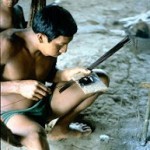
Very few indigenous peoples of the Upper Amazon hunt with blowguns any more. The weapon of choice is a 16-gauge shotgun. In North America, we tend to use 20-gauge shotguns for birds and 12-gauge for larger game; the 16-gauge is, in fact, an excellent all-around shotgun, useful for hunting medium-size jungle game — tapir, capybara, agouti, peccary, monkey. But there is a price. Hunting with a shotgun may be too efficient, making it easy to overhunt particular areas. Perhaps more important, it makes indigenous people dependent on manufactured goods: they cannot make, but rather must buy, shotgun shells.

Napo Runa Indians who regularly go to work for the oil companies often have themselves cleansed with tobacco smoke by a shaman when they return to their villages. They are having themselves healed of wage labor; they are being cleansed of capitalism. This is a small act of cultural resistance, affirming the validity of their traditional values over against those of their white employers.
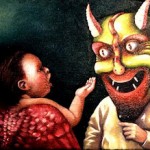
Amazonian mestizos believe that it is possible to lose one’s soul, or part of one’s soul, through more or less natural processes; indeed, soul loss through susto, fright, is a relatively common childhood condition. The sickness category of susto is undoubtedly derived from traditional Hispanic medicine; indigenous Amazonian shamanic traditions of soul loss appear to be too distant geographically and conceptually — for example, among the Wakuénai — to have significantly contributed to the idea. Mestizo shamans also frequently use the term manchari for the same condition, presumably from the Quechua manchay, be afraid.
The air, especially at night, is full of souls — souls of the dead, souls of departed and powerful shamans, and what my teacher doña María Tuesta called almas olvidadas, forgotten souls, the wandering spirits of those who were neglected and abused while alive. The wandering and sorrowful soul of a dead person may appear as a being called a tunchi. An evil spirit of the dead, driven by malignancy rather than sorrow, is called a maligno or an alma mala, an evil soul.
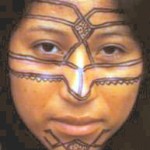
Face and body painting have been important parts of Amazonian culture for centuries. Face painting in particular has played an important part in hunting, warfare, and courtship. Traditional designs could designate status and identity. A man’s facial paint can give him courage and power; a woman’s facial paint gives her … well, sex appeal. Face painting also played important social roles; among the Shipibo, for example, painting a man’s face in traditional designs was a job performed only by women.

The bufeo colorado, pink dolphin (Inia geoffrensis), is considered a powerful shaman, which casts spells when it surfaces, perhaps because its blowhole makes blowing and whistling sounds similar to those made by a shaman. Much dolphin behavior supports belief in their intelligence. They are curious, and they will swim near boats and approach swimmers in the water. They will chase a school of fish, allowing fishermen to go upstream and set their nets; the dolphins will then remain on the outside of the nets, easily capturing any fish that escape — a curiously symbiotic relation between humans and dolphins.
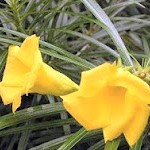
Two different different plants share the name camalonga or cabalonga, the first term being more common in in Perú and the second in Colombia. The first of these two plants, sometimes distinguished as camalonga negra, apparently may be any of several species in the genus Strychnos, including some that are used in the manufacture of the arrow poison curaré. The second, sometimes distinguished as camalonga blanca, is pretty clearly Thevetia peruviana, the yellow oleander.
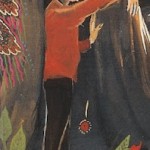
The chullachaqui is a demon of the jungle, known to almost everyone in the Amazon, frightening and pathetic. He is characterized by having one or both feet deformed — either both turned backwards, or one shaped like that of an animal, such as a deer or jaguar; the name is Quechua, meaning uneven feet. The deformed foot is emblematic of his nature: turned backwards, it leaves false tracks; but it cannot be disguised, revealing his identity.
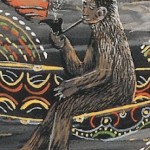
Mestizos in the Upper Amazon have a variety of beliefs about the other-than-human persons who inhabit the hidden realms deep in the jungle and under the water. These beings are often conceived as inhabiting the three realms of air, earth, and water; all of them are dangerous. They are different from the madres or genios, the spirits of plants and animals with whom the shaman interacts, although shamans often seek to enter into right relationship with these beings as well; rather, ordinary people may, to their sorrow, unintentionally and unexpectedly encounter these more-or-less corporeal other-than-human persons.
Apparently a major cultural revolution has been taking place right under my nose, and I didn’t even know it was happening. La Tigresa del Oriente is the stage name adopted by Peruvian hairdresser and makeup artist Judith Bustos. Her videos on YouTube have become wildly popular. Her video entitled Nuevo Amanecer, New Dawn, had been watched, when I checked this morning, 3,396,779 times.

Discussing the article:
Hallucinogens in Africa